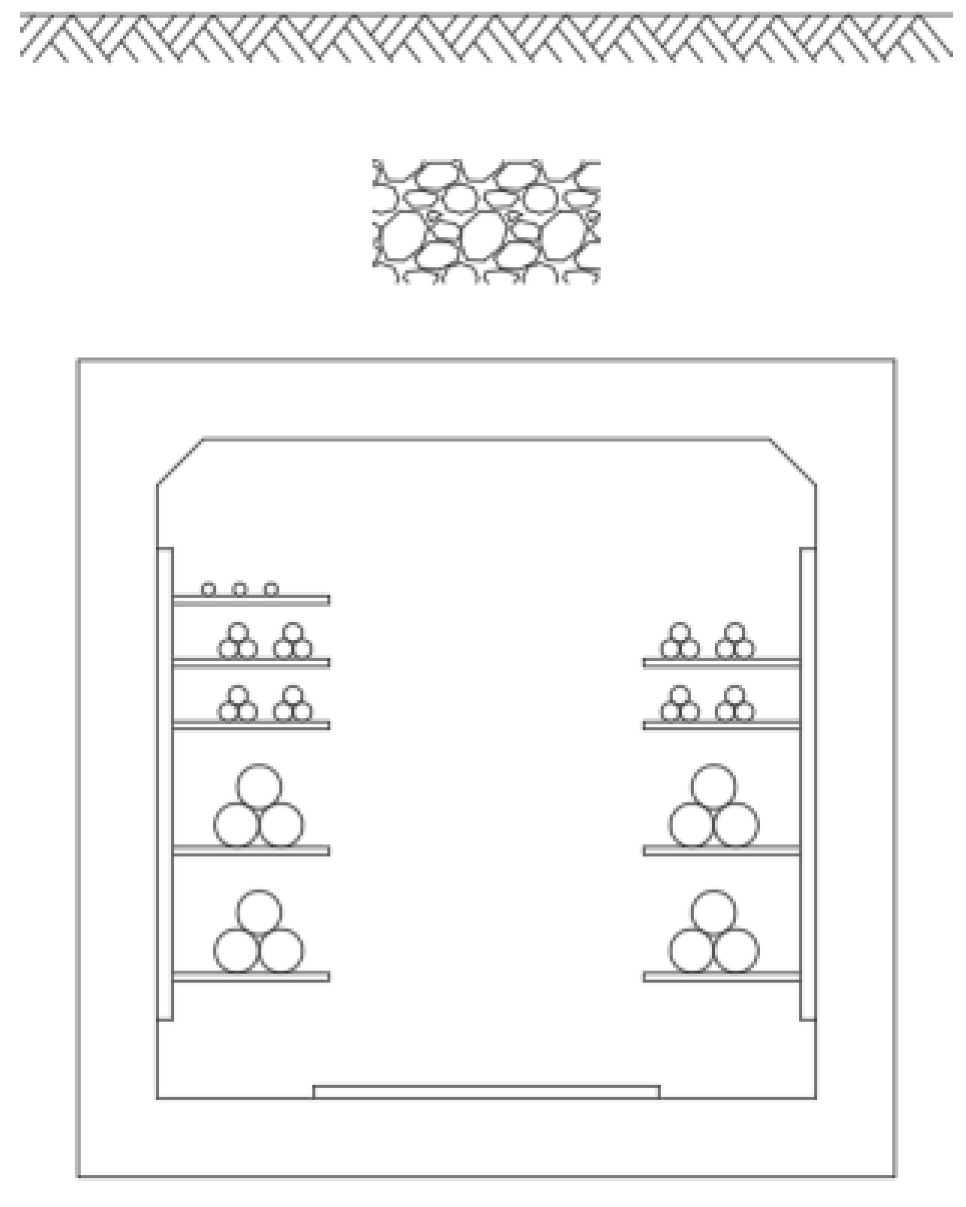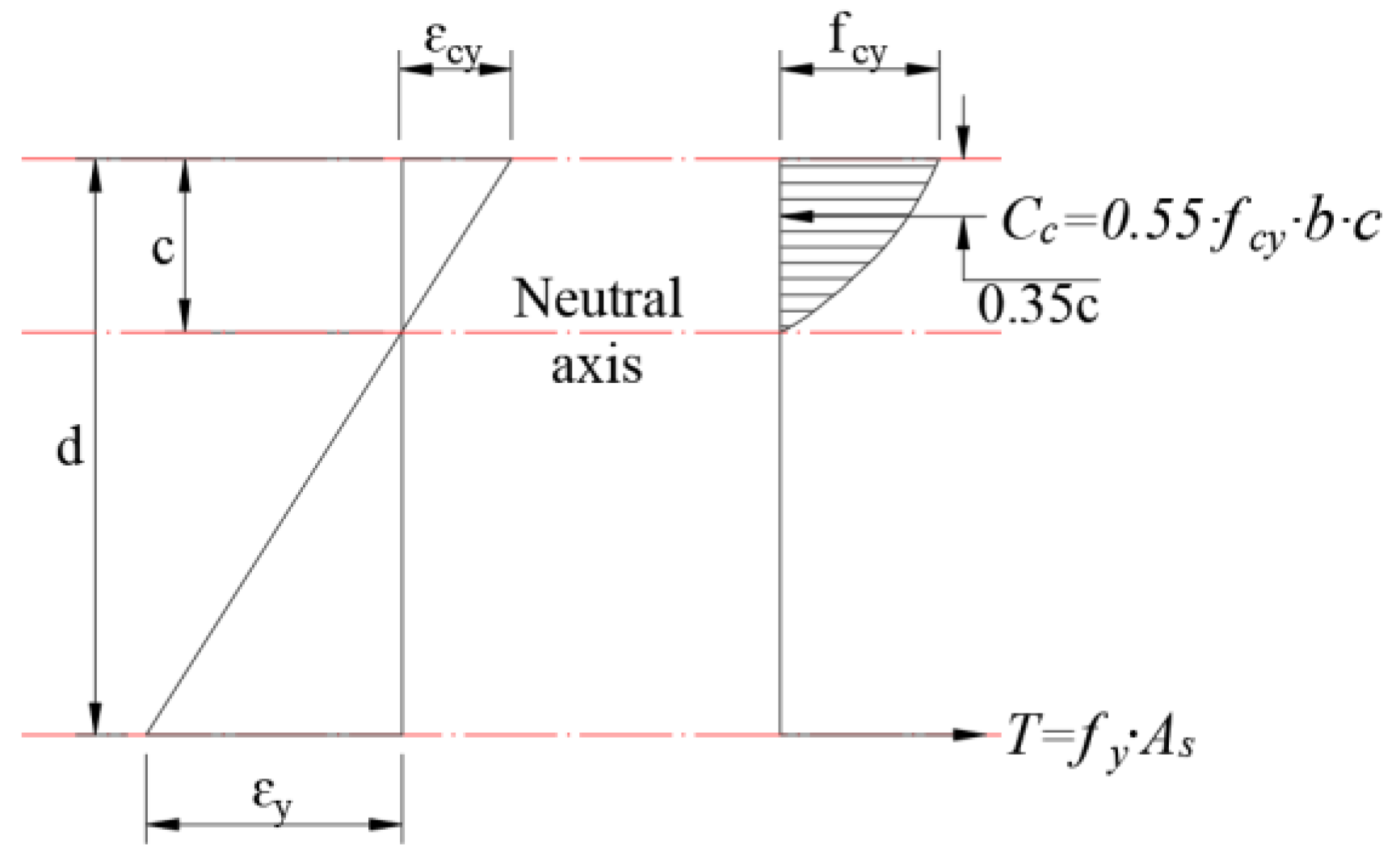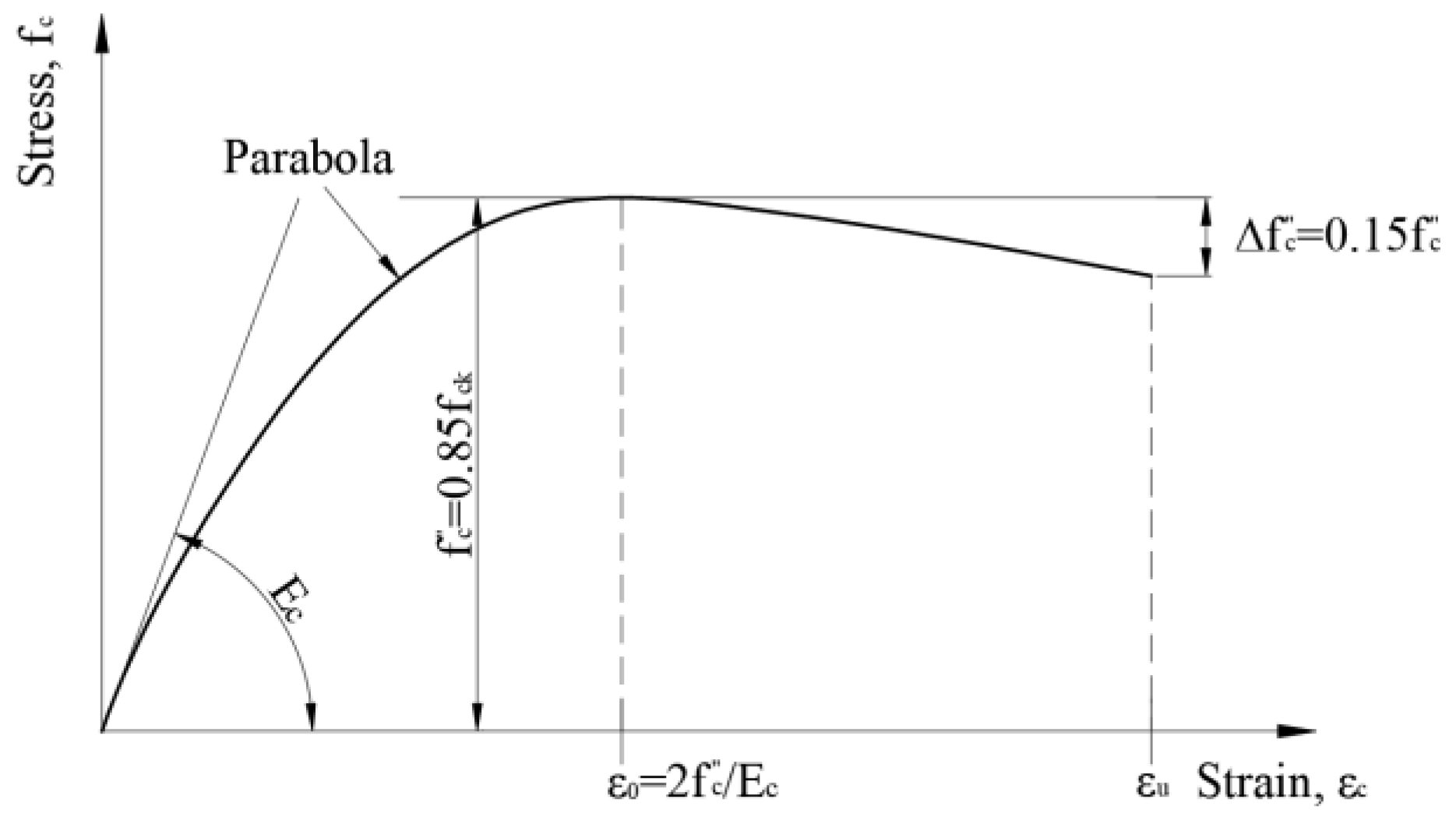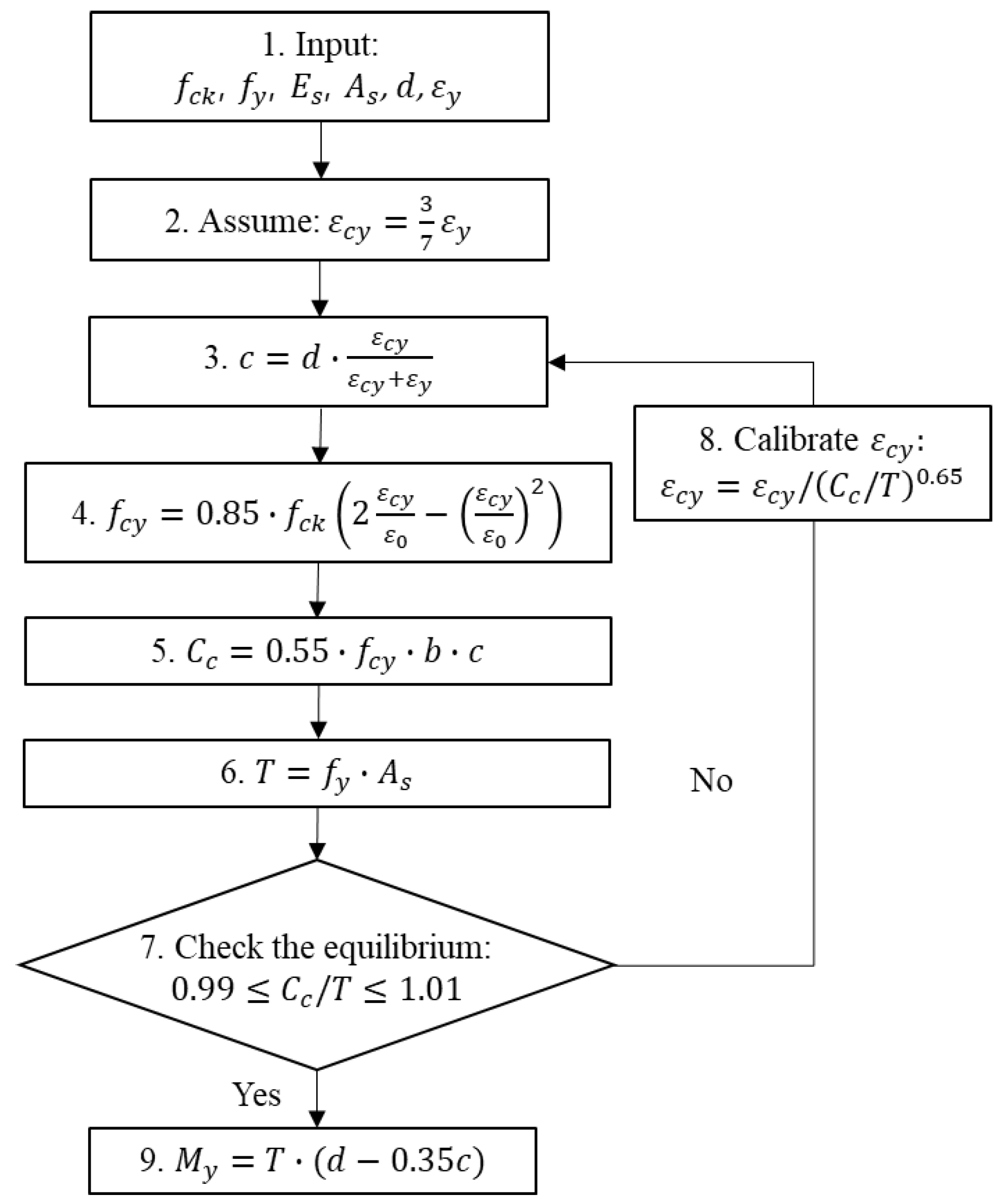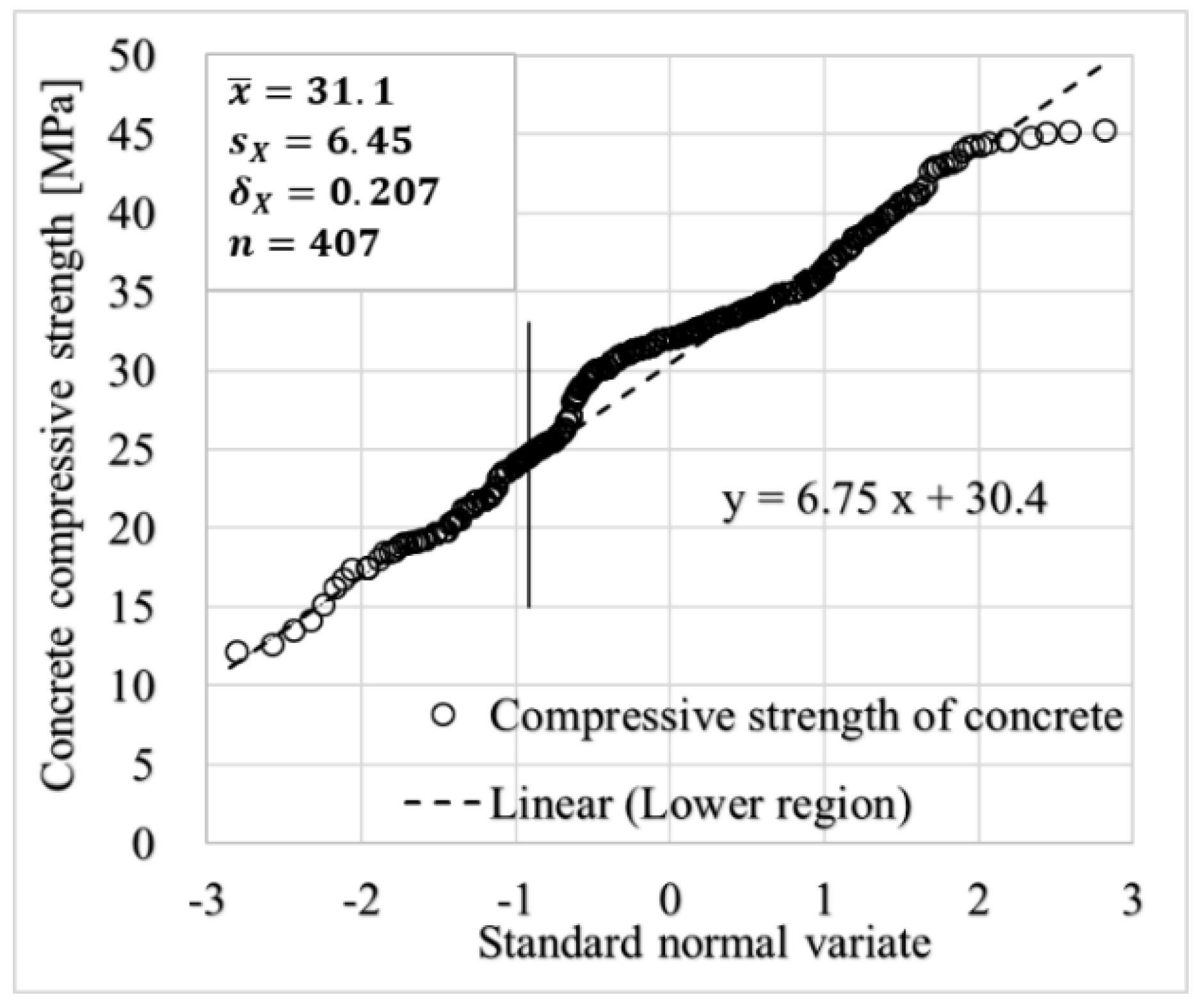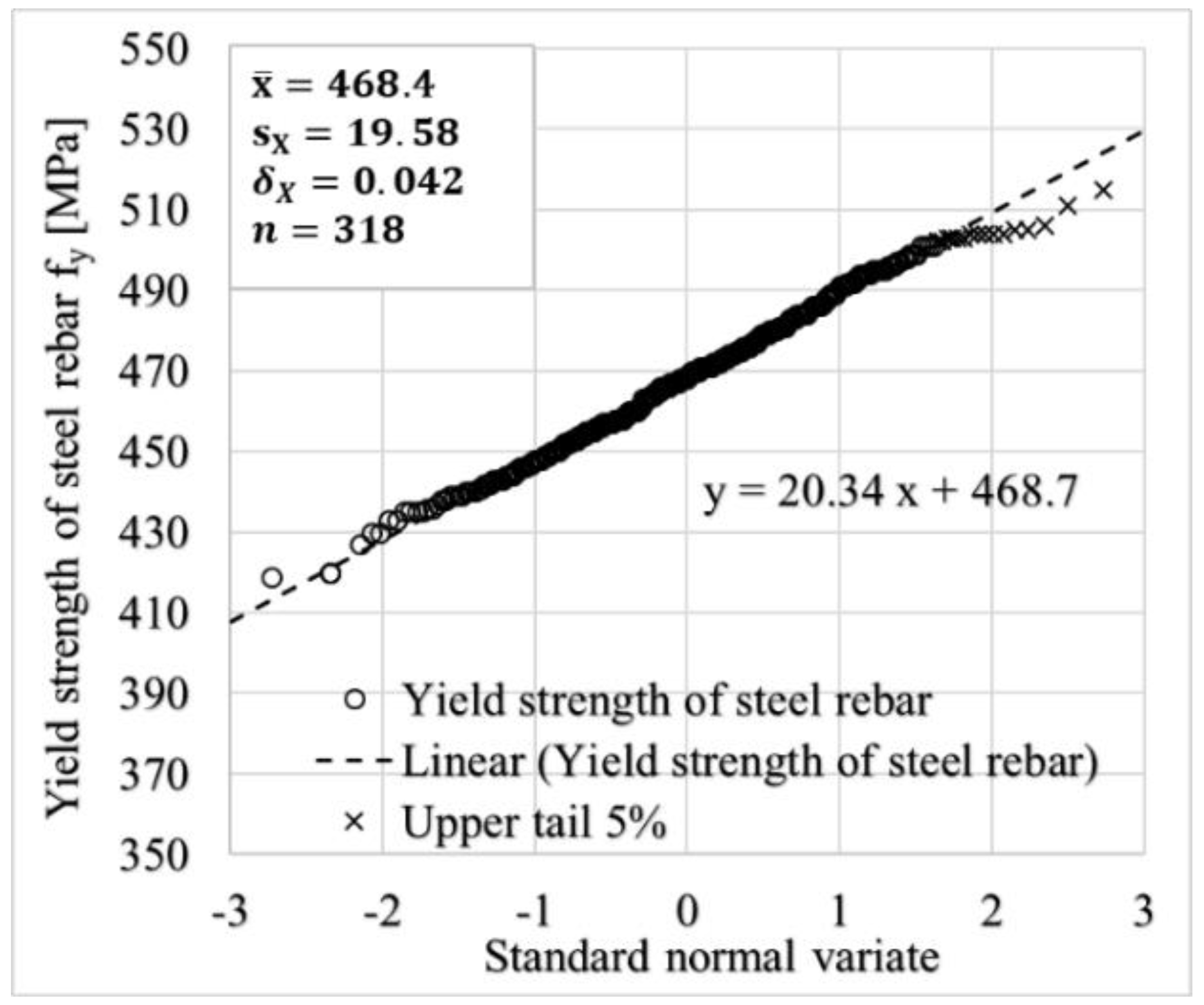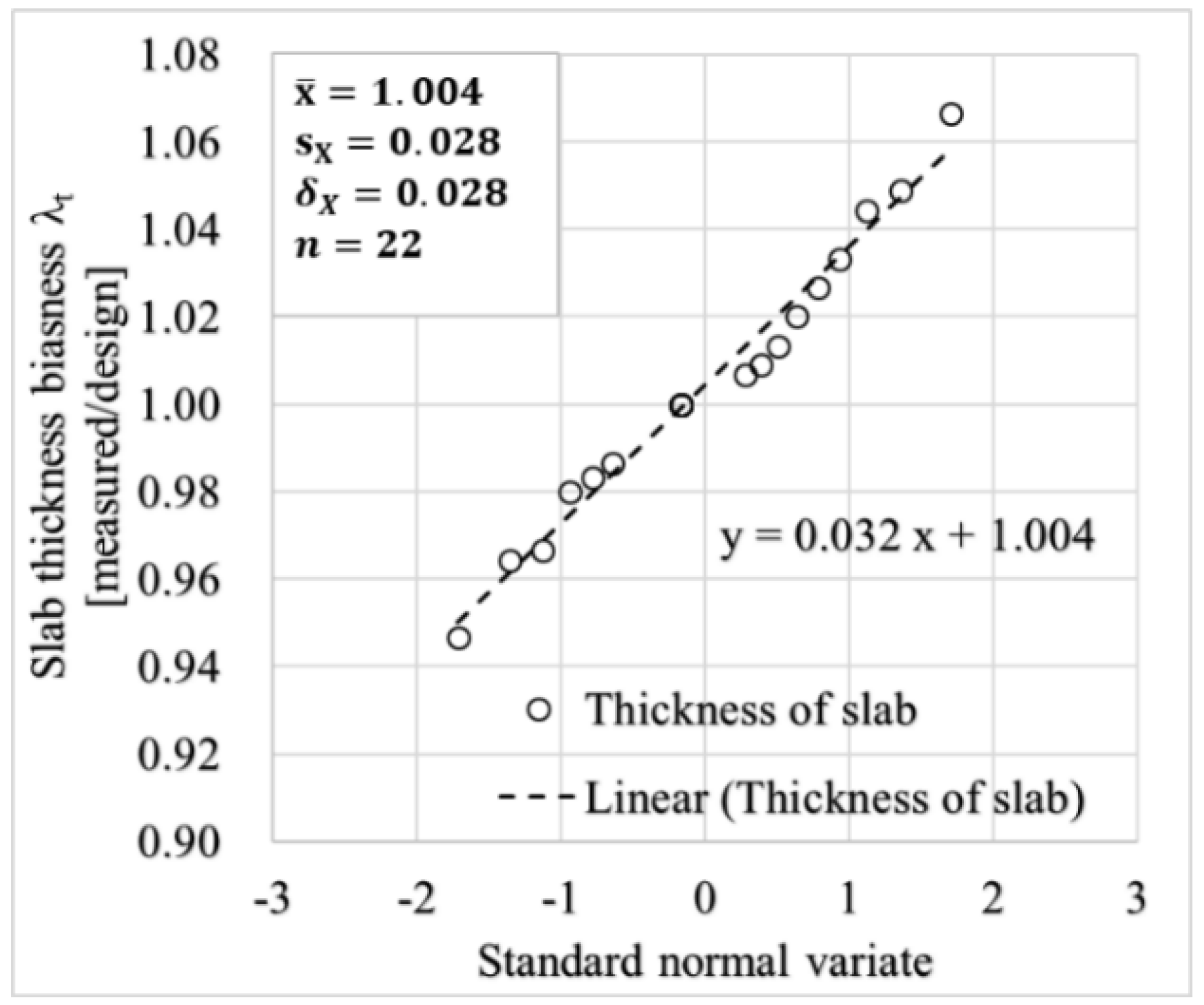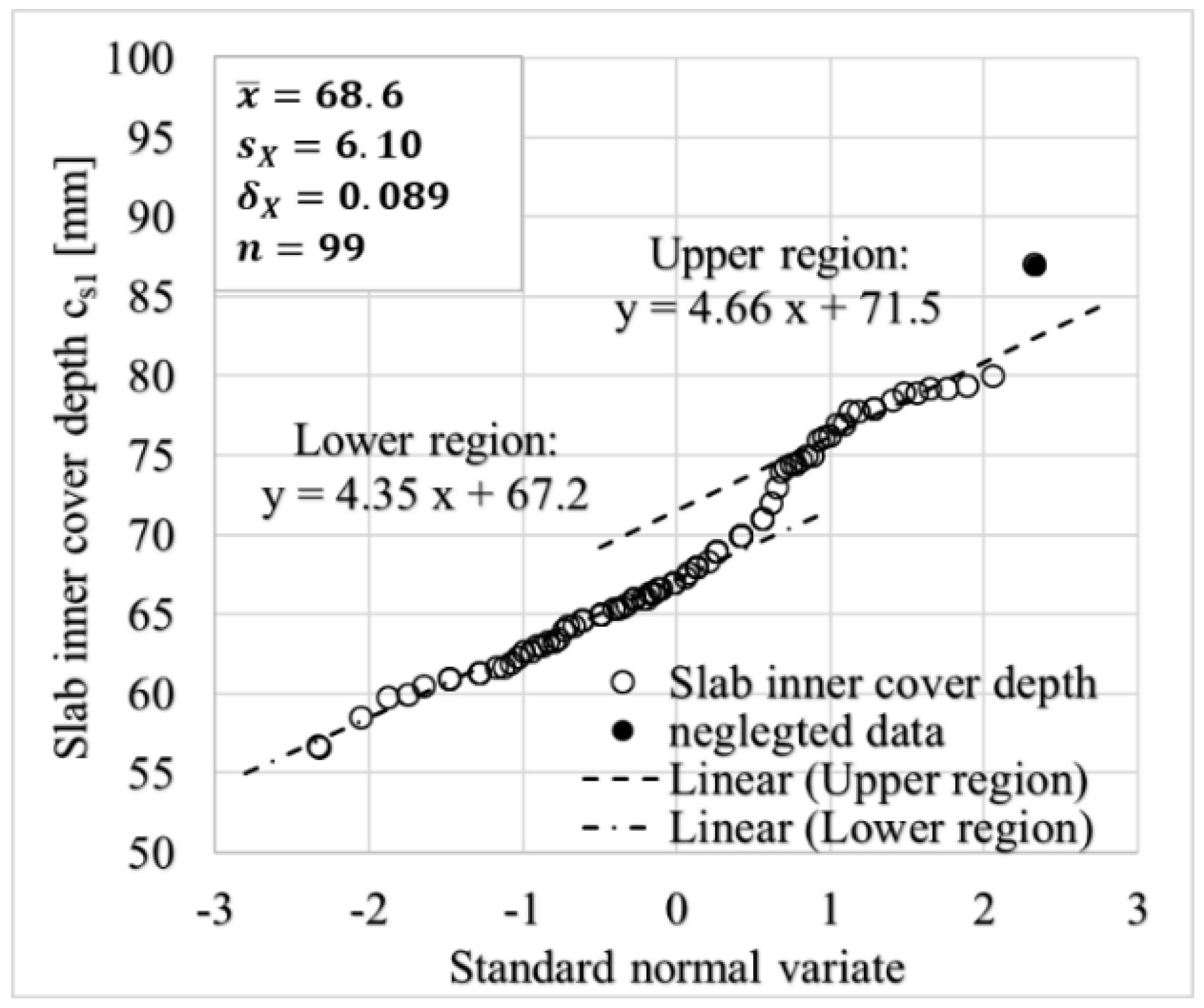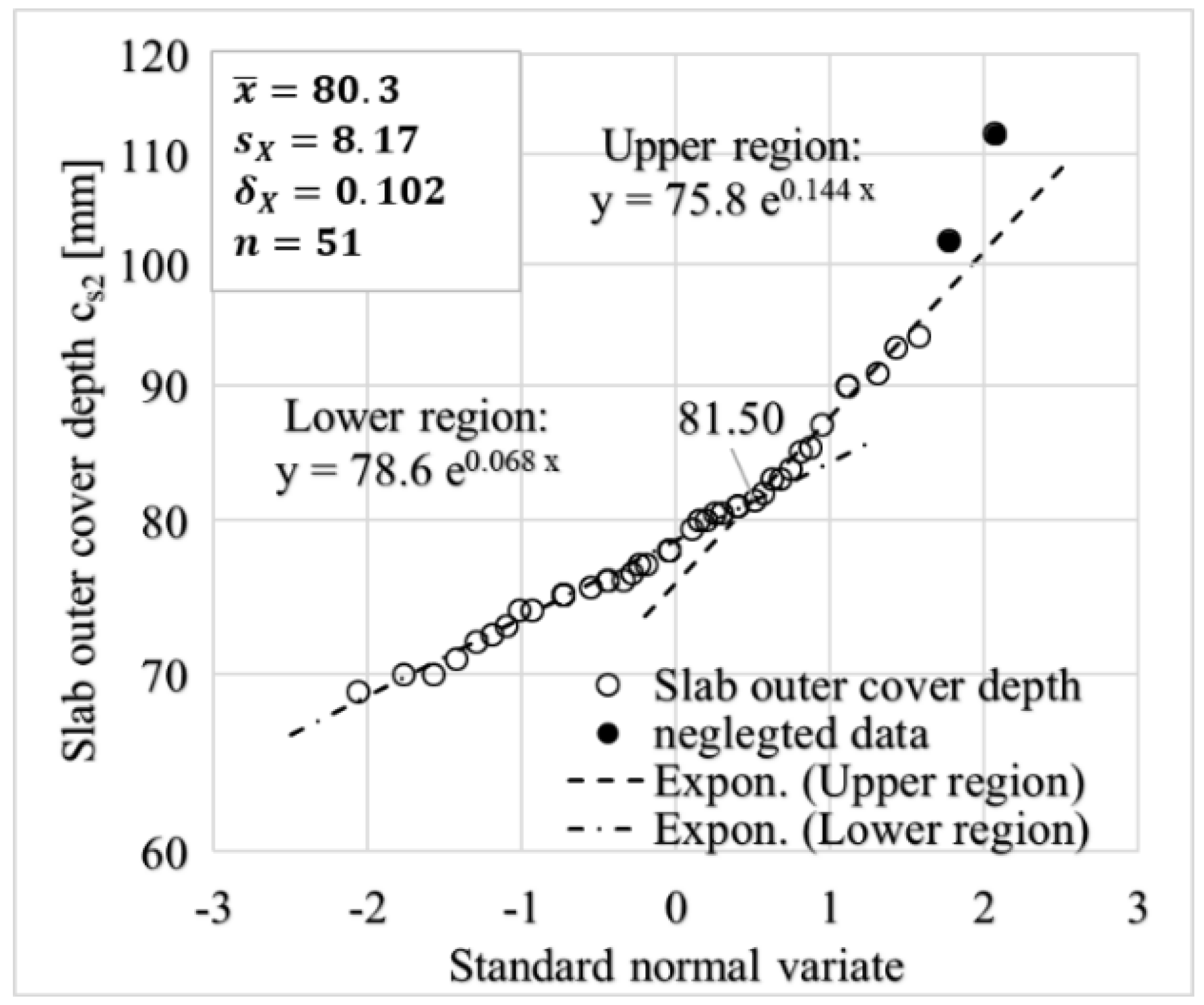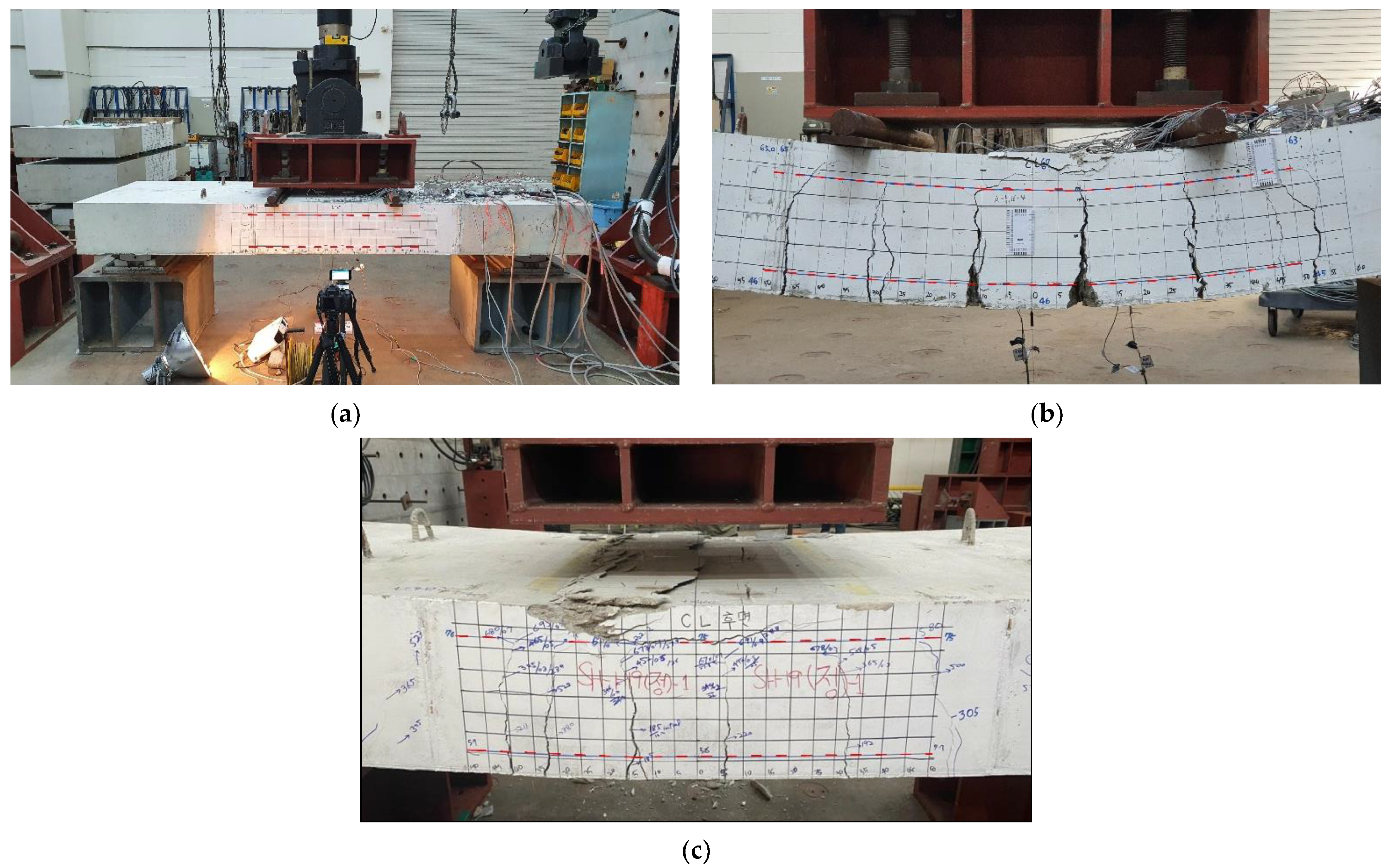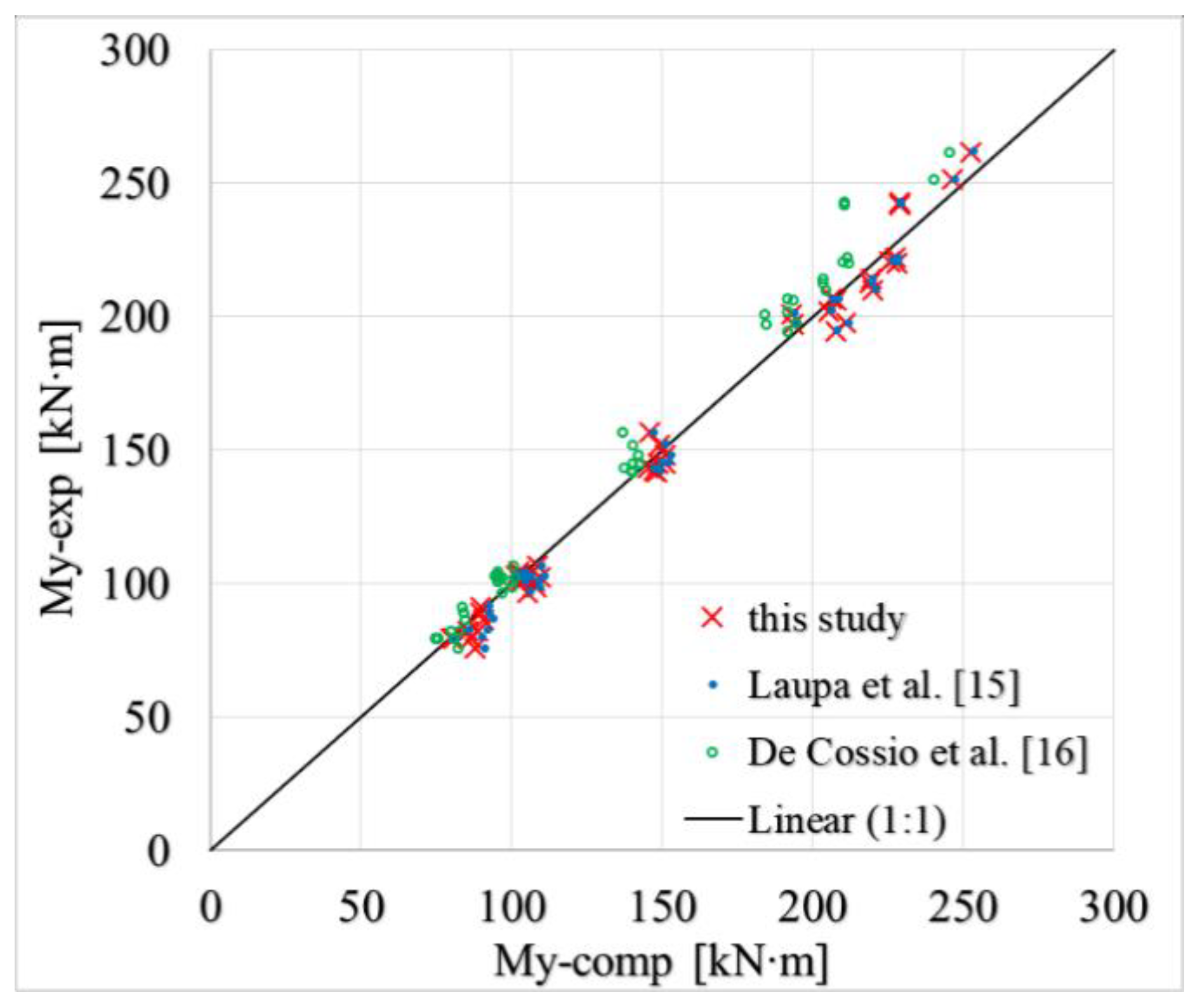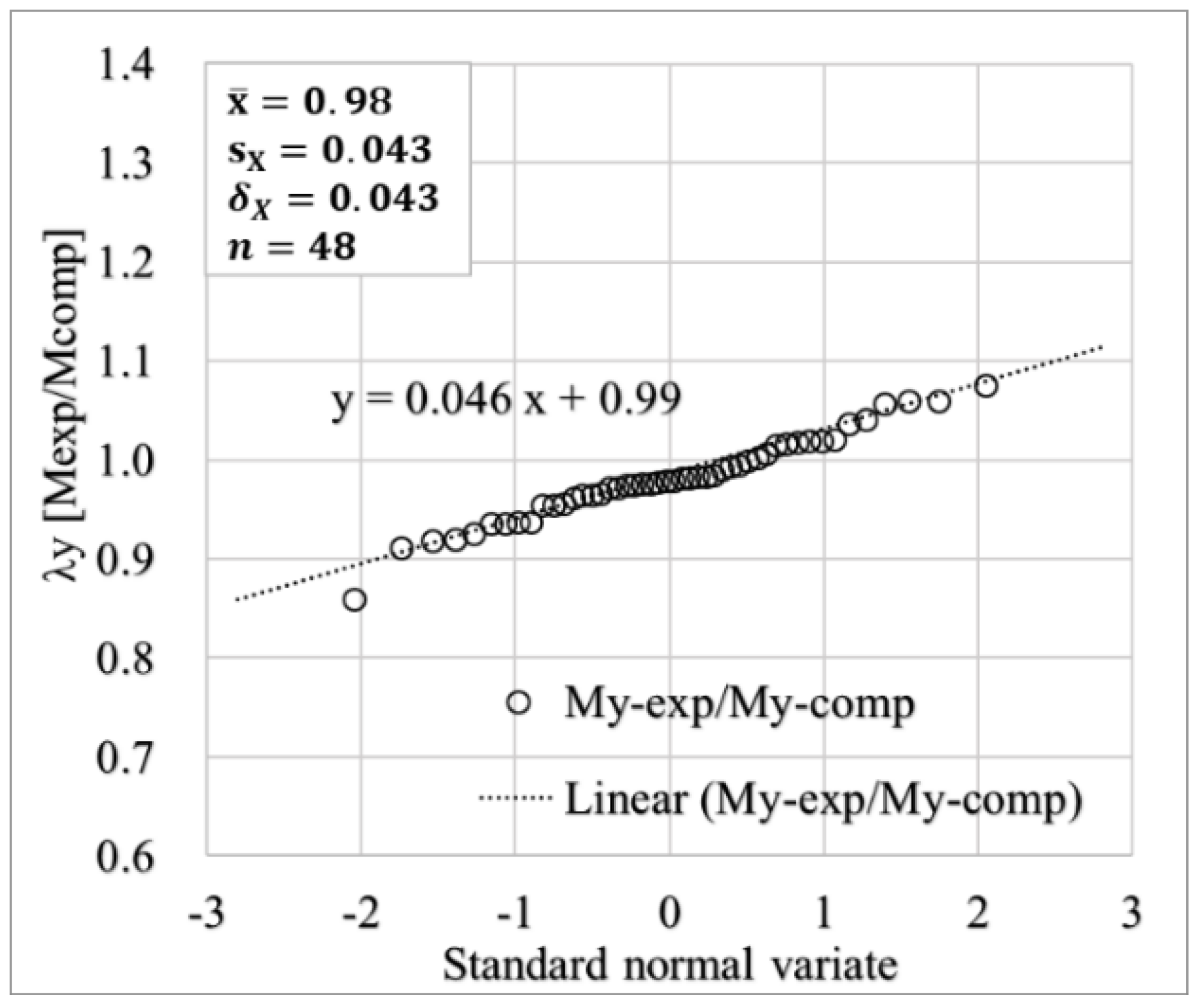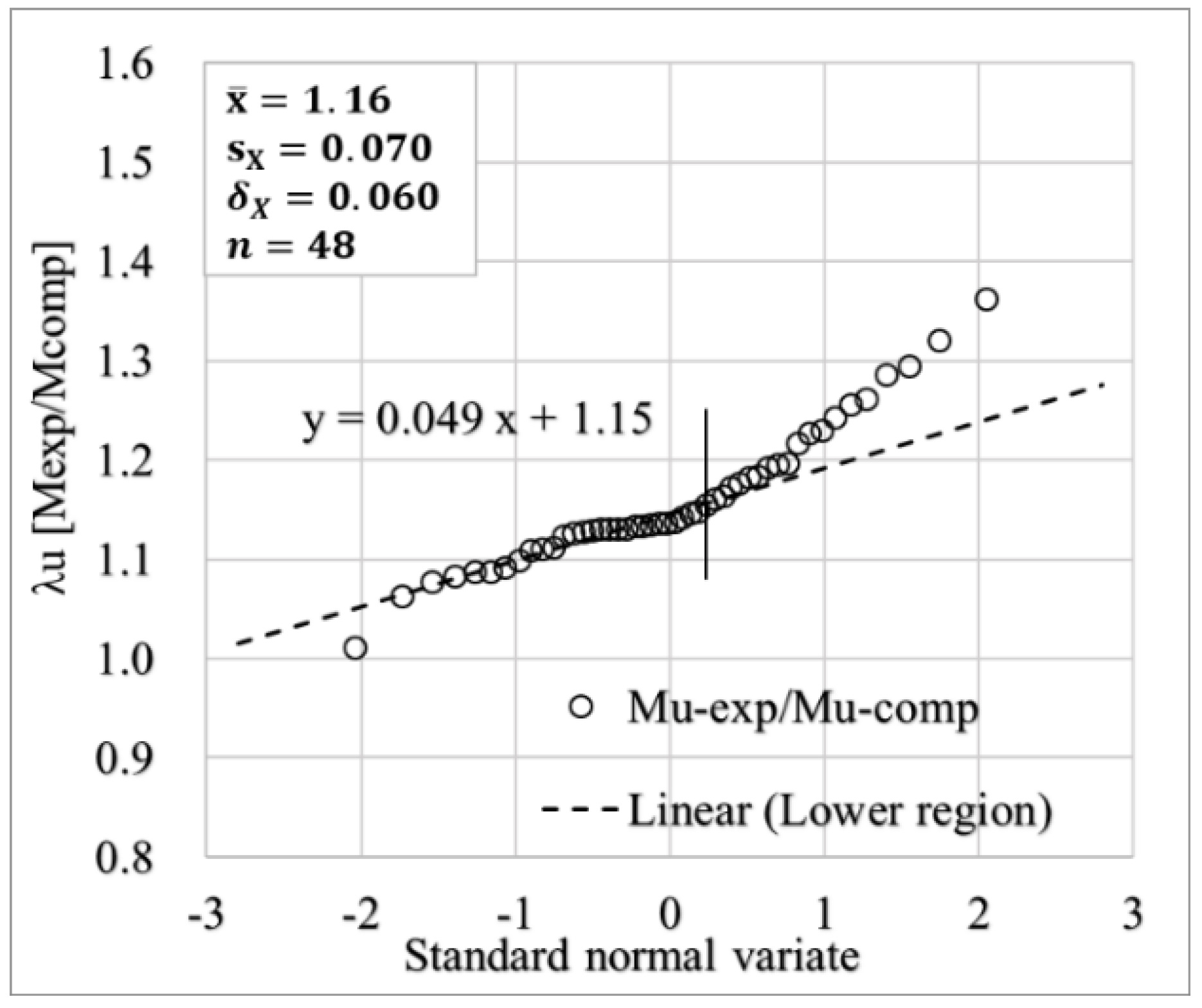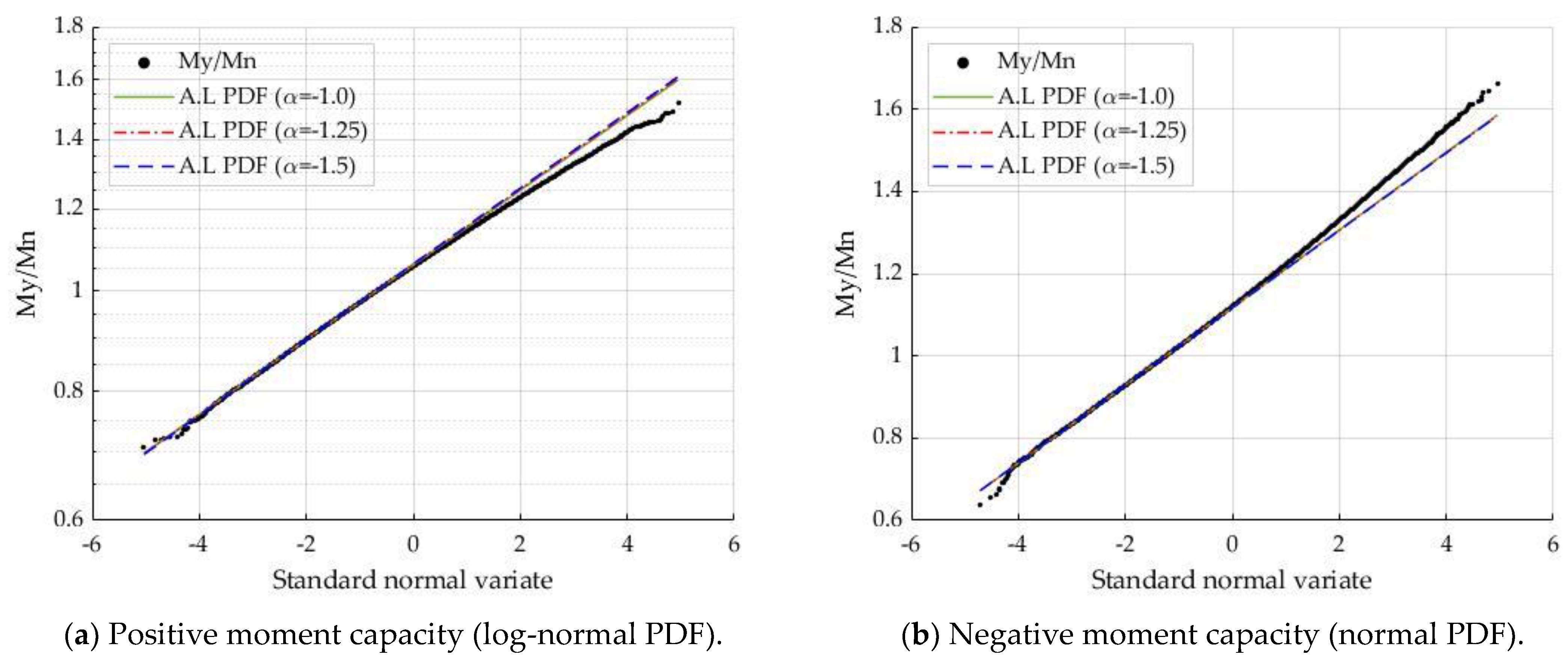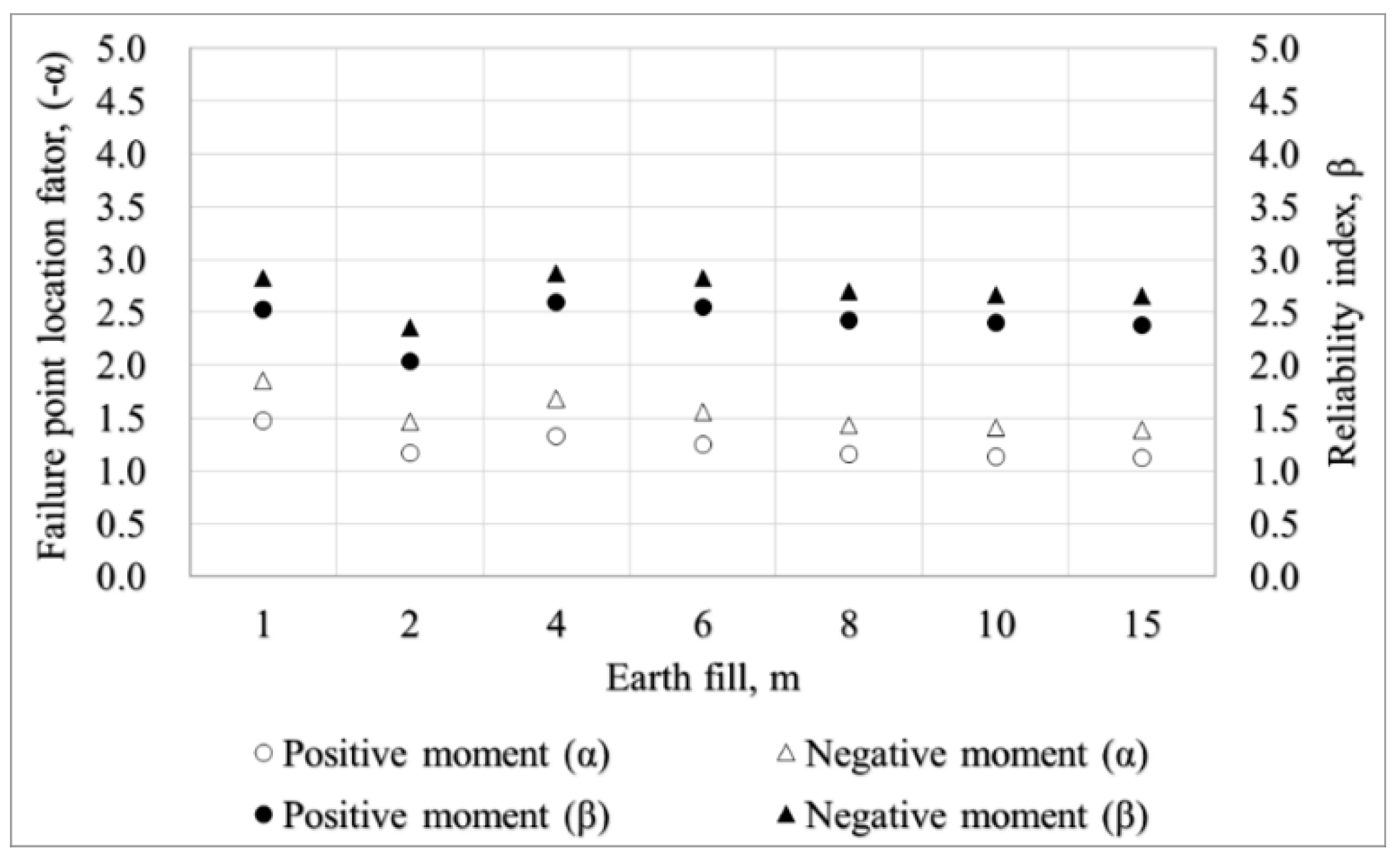1. Introduction
The utilization of underground space has become quite important in urban areas due to the increasing demand for city infrastructure. Underground transportation systems and utility spaces can alleviate the increasing demand on infrastructure and would provide more open and green spaces for urban dwellers. Underground RC box culverts are widely adopted for utility tunnels for electricity power lines, water pipes, and communications lines.
The underground box culverts constructed for the local electric company in this study have a very typical cross-section, as shown in
Figure 1. The spans (internal distances between two walls) range from 2.0 m to 2.6 m generally, and the rises (internal distances between the top and bottom slabs) range from 2.0 m to 2.2 m. The earth fills over the top slabs are generally required to be greater than 1.2 m to prevent freezing damage. Most underground box culverts are constructed along existing urban highways. Haunches are constructed at the top two corners because the corner end moments of the bottom slab are not large due to the strengthened foundation under the bottom slab. The cover depth (the distance from the center of the rebar to the outside surface) of the outside main rebar is fixed at 80 mm, and it is 60 mm for the inside main rebar.
Various probabilistic resistance models have been proposed and adopted to perform reliability-based code calibrations [
1,
2,
3,
4,
5,
6,
7,
8,
9], mainly for buildings and bridges. Ellingwood et al. [
1] proposed a probabilistic model of the flexural resistance of RC members in order to develop the load combinations and load factors for limit state design, in which the basic data were collected mainly from RC buildings and prestressed concrete beams. Nowak [
2] developed a probabilistic resistance model of general bridge structural members based on the statistical models of the basic design variables proposed by Ellingwood et al. [
1]. Nowak, Park, and Ojala [
3] performed a reliability-based calibration of design codes for buried structures. However, the resistance model in this study [
3] is adapted from previous works on bridge structures [
10,
11]. Nowak et al. [
4,
5] and Rakoczy and Nowak [
6] proposed resistance models of building RC components, revised with new material test data. Galasso et al. [
7] investigated the uncertainty of the flexural strength of an RC beam, in which the probabilistic model of rebar strength was only modified based on data collected from local (Italian) industries. All other models have been adapted from previous studies [
1,
4,
12]. Similarly, Foster et al. [
8] studied the statistical characteristics of material properties as well as uncertainties in strength of RC members based on local data and local laboratory tests (Australia). Wisniewski et al. [
9] proposed the probabilistic models for mechanical properties of materials including concrete, reinforcing steel, and prestressing steel to account for a recent improvement in production. Most studies [
4,
5,
6,
7] adopted probabilistic models of geometric dimensions, as well as the experimental strength bias values in relation to flexural strength, from Ellingwood’s [
1] models, in which geometric dimension errors were measured based on building members and the flexural strength biasness model was developed based on the experimental results obtained from RC beams and prestressed beams.
Most underground utility culverts are constructed through a process involving open-excavation, concrete formwork, rebar assembly, concrete cast-in-place, field curing, earth refill, and pavement. Therefore, quality control for underground RC culverts has not been able to maintain constancy throughout the construction process in relation to the load-carrying capacity of RC culvert members. The variability of the member strength of RC culverts should be considered in the design process in order to achieve consistent structural safety as well as to ensure the construction of cost-efficient structures. RC box culverts, which consist of slab- and wall-type members, may have different characteristics compared with the members of buildings or bridges. In addition, the target reliability levels for underground power supply culverts may be different from the safety levels inherent in building design and bridge design.
In this study, probabilistic resistance models that address the variability inherent in the flexural strength of the slab members of underground RC box-type culverts are proposed based on real field data collected and measured at local construction sites of underground RC box culverts in South Korea. In addition, 48 RC slab specimens are tested to verify uncertainties in the nominal flexural capacity.
5. Probabilistic Flexural Strength Model of RC Slab Members
The probabilistic characteristics of the flexural strength of RC members are examined through Monte Carlo simulations based on probabilistic models of design variables (
) and probabilistic models of experimental strength biasness (
and
). The Monte Carlo method is a numerical process of repeatedly calculating a mathematical operator including random variables with prescribed probability distributions to obtain the solution to complex probabilistic problems [
19]. Probabilistic models of variables are summarized in
Table 4.
The thicknesses of the simulation slab models range from 300 mm to 500 mm. The section areas of the reinforcements in the tension side vary from 993 mm2 to 2578 mm2 (ρ: 0.0022–0.0095), which are widely used design values in local underground RC box culverts, and the area of the reinforcements in the compression side is taken generally as half of the bottom rebar area. The positive moment capacity at the middle of the top slab and the negative moment capacity at the end of the top slab in the box section are investigated in this study. The middle section and the end section have different nominal cover depths (60 mm and 80 mm), which result in different effective depths.
Different simulation sizes are assigned to the different slab models based on the inventory survey, presented in
Table 5. The basic simulation size is 100 K. The slab with a thickness of 300 mm and bottom rebar area of 1324.0 mm
2 has a weight factor of 20 in
Table 5. Therefore, 2000 K simulations are generated for the positive moment capacity. For the slab with a thickness of 500 mm and bottom rebar area of 1324.0 mm
2, 100 K ultimate moments are simulated. In total, 8300 K simulation results are used to investigate the ultimate flexural strength model for the positive moment in the RC box slab. The same procedure is repeated for the negative moment model.
The evaluation process for the probabilistic model of flexural strength for RC members is illustrated in
Figure 18. The ultimate moment strength is calculated considering both upper rebars and lower rebars that are effective in their load-carrying capacity. The yield moment strength is estimated considering only the lower rebar because the effect of the upper rebar is negligible until the yield moment is developed. The moment strengths (ultimate
and yield
) are normalized with the nominal moment strength (
), calculated with the nominal design values of all the design variables, in which only the rebars on the tension side are considered (Equation (1)), as in most design practices.
The simulation results for the ultimate moment strength are plotted on normal probability papers in
Figure 19. Even though the ultimate moments show a good fit to the normal PDF, as shown in
Figure 19, adaptive local PDFs are proposed for selected regions with various probable failure points of
, as summarized in
Table 6. The adaptive PDF is selected to fit the simulation results in the selected lower region, below (mean +
), in which
is the failure point location factor. The value of (mean +
) is assumed to be close to the value of
at the probable failure point in the calculation of the reliability index through the advanced first-order second-moment (AFOSM) method.
As described in
Figure 20, the positive yield moment fits better with the 1, whereas the normal PDF is more appropriate for the negative yield moment. For the yield moment models, the failure point location factor
is selected between −1.0 and −1.5, as summarized in
Table 6, because the expected reliability levels inherent in the yield moment limits could be lower than those for the ultimate moment limits. This is shown in
Figure 21 and
Figure 22. For the log-normal PDF,
is the median and
is the logarithmic standard deviation. The probability models with either
or
show almost the same statistical parameters for both the positive moment and the negative moment.
The limit state function selected for the reliability evaluation is related to the major load combinations adopted in the design of local underground RC culverts, presented in Equation (6):
where
= flexural resistance,
= dead load effect (bias factor 0.94, cov 0.04, normal PDF),
= traffic live load effect (bias factor 2.24, cov 0.10, Gumbel’s Type-I PDF),
= vertical earth load effect (bias factor 1.18, cov 0.17, normal PDF), and
= horizontal earth load effect (bias factor 1.00, cov 0.28, normal PDF) for an example case with an earth fill depth of 4 m, in which the bias factor is the ratio of the probability model mean to the nominal design value.
Figure 21 summarizes the failure point location factors resulting from the reliability evaluations for various earth fill depths with the probability model (
) of
, as shown in
Table 6. Most location factors were found to be about −2.5 for the positive ultimate moment and ranged from −2.5 to −3.0 for the negative ultimate moment. However, the probabilistic model was not very sensitive to the location factor of
, as presented in
Table 6.
Figure 22 presents the failure point location factors resulting from the reliability evaluations with the probability model (
) of the positive
, as shown in
Table 6, which ranged from −1.0 to −1.5. Similarly, most failure location factors were found to be around −1.5 for the negative yield moment.
It was concluded that probabilistic ultimate strength models for flexural members may be proposed with a normal PDF having a mean of 1.38 and a cov of 0.08 for the positive moment region and a normal PDF having a mean of 1.45 and a cov of 0.09 for the negative moment region. For the probabilistic yield strength models, a log-normal PDF with a median of 1.06 and a logarithmic standard deviation of 0.085 for the positive yield moment region and a normal PDF with a mean of 1.12 and a cov of 0.085 for the negative moment region may be representative. The probabilistic models need to be modified slightly, depending on the target reliability level, even though the PDF models were found not to be very sensitive to the reliability levels.
To compare the resistance models obtained in this study with the flexural resistance models proposed in previous studies, the statistical parameters of basic random variables and flexural resistance of structural members proposed in the previous studies are summarized in
Table 7 and
Table 8, respectively. The original references are provided in the “Ref.” column in
Table 7 and others are based on their own data. The statistical parameters in
Table 8 were obtained through Monte Carlo simulations with the probabilistic models given in
Table 7.
The resistance model investigated in this study showed a higher mean value and a lower cov compared with the previous studies [
1,
4,
5], except for that of Galasso et al. [
6]. In Galasso et al. [
6], the material partial factors were included in the nominal resistance to be divided and the higher bias factor was evaluated. The main reason for this result is that the mean value of the experimental strength biasness was higher than that of other studies [
1,
4,
5,
6], as mentioned in
Section 4.2. The mean biasness of
based on the Korean industrial data was slightly higher than those in other studies, except for that of Galasso et al. [
6]. However, the cov values of the basic design variables were slightly smaller than others, because the probabilistic models of the basic design variables adopted in this study were based on the critical regions—either the lower tail region or the upper tail region. Therefore, the cov of the resistance model results in a smaller cov.
To verify the simulation procedure proposed in this study, the simulation procedure was performed with the basic random variable models recommended in Ellingwood et al. [
1]:
bias factor 0.85, cov 0.18;
bias factor 1.13, cov 0.10; effective depth of bottom rebar—mean error −3.30 mm, SD 8.89 mm; experimental strength biasness—bias factor 1.01, cov 0.046; the cover depth of the upper rebar was assumed to be deterministic at 80 mm. All basic random variables were assumed to follow normal distribution functions. As summarized in
Table 9, the mean value was found to be same, but the cov at 0.11 was smaller than 0.15 because the effective depth error models were fixed with a mean of −3.30 mm and standard deviation of 8.89 mm, regardless of the structural member depths.
6. Conclusions
To develop probabilistic models of flexural strengths for slab members adopted in underground RC box culverts in Korea, probabilistic models of basic design variables (concrete compressive strength, yield strength of the rebar, thickness, and cover depth) were established based on material testing data of concrete and reinforcements, and field measurement data on the sectional properties, which were collected from the construction sites for underground RC box culverts in Korea. The biasness models for flexural strength (ultimate and yield strength) were evaluated as the ratio of experimental moment strength to analytical moment strength, calculated with the material strength test results and the measured sectional properties of one-way RC slab specimens.
The probabilistic characteristics of the flexural strength of RC slab members were examined through a Monte Carlo simulation with the probabilistic models of basic design variables and the biasness models of the moment strengths. Most moment strengths exhibited a better fit with normal PDFs, whereas log-normal PDFs were more suitable for positive yield moments. The positive ultimate flexural strength model was observed to follow a normal PDF with a mean of 1.38 and cov of 0.08, and the negative ultimate flexural strength model to follow a normal PDF with a mean of 1.45 with cov of 0.09 with respect to the nominal moment strength. The yield moment strengths were modeled using a log-normal PDF with a median of 1.06 and a logarithmic standard deviation of 0.085 for positive moment section, and a normal PDF with a mean of 1.12 and cov of 0.085 for negative moment section.
The proposed procedure may be applied to develop probabilistic resistance models for structural members, in which the construction error characteristics are expected to be different from other practices.
